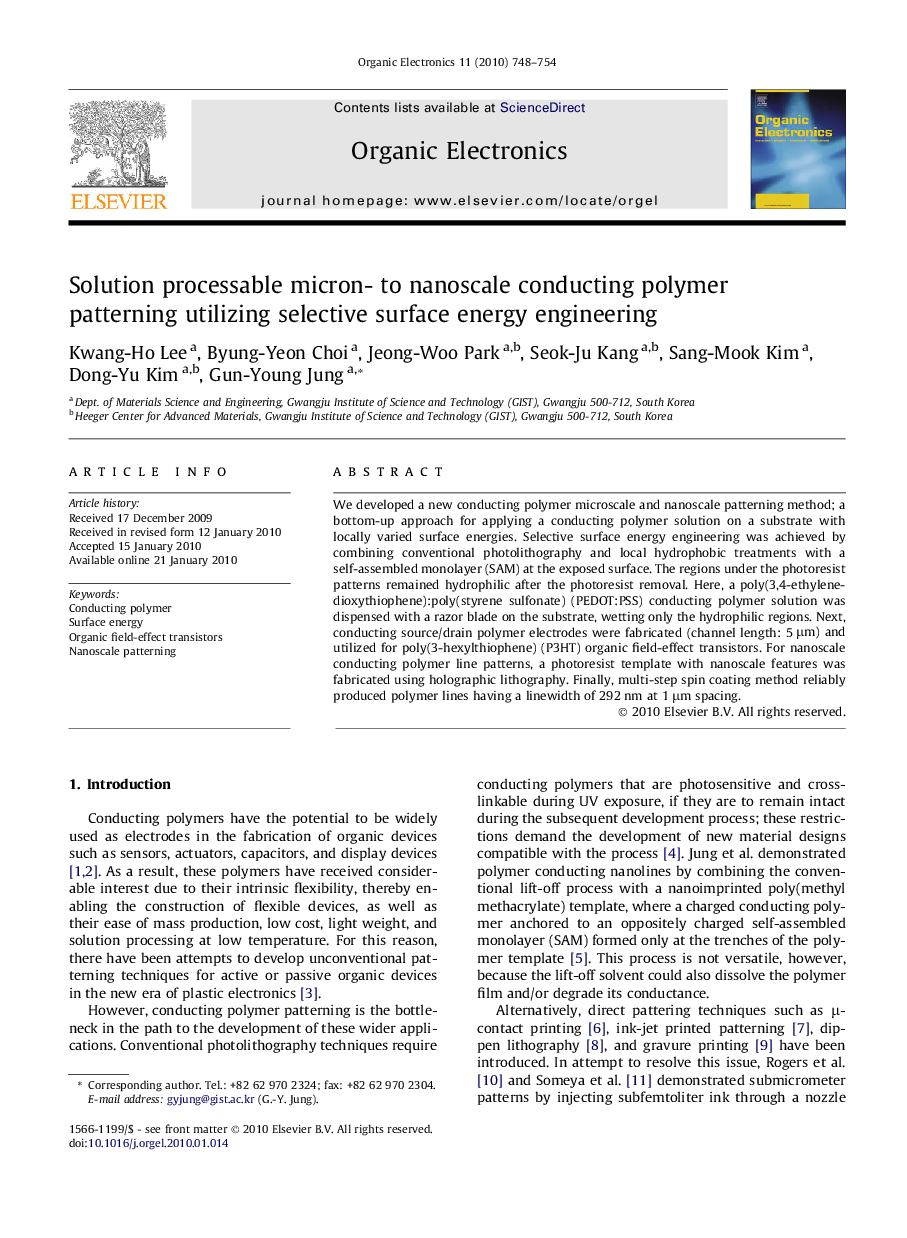| Article ID | Journal | Published Year | Pages | File Type |
|---|---|---|---|---|
| 1267918 | Organic Electronics | 2010 | 7 Pages |
We developed a new conducting polymer microscale and nanoscale patterning method; a bottom-up approach for applying a conducting polymer solution on a substrate with locally varied surface energies. Selective surface energy engineering was achieved by combining conventional photolithography and local hydrophobic treatments with a self-assembled monolayer (SAM) at the exposed surface. The regions under the photoresist patterns remained hydrophilic after the photoresist removal. Here, a poly(3,4-ethylene-dioxythiophene):poly(styrene sulfonate) (PEDOT:PSS) conducting polymer solution was dispensed with a razor blade on the substrate, wetting only the hydrophilic regions. Next, conducting source/drain polymer electrodes were fabricated (channel length: 5 μm) and utilized for poly(3-hexylthiophene) (P3HT) organic field-effect transistors. For nanoscale conducting polymer line patterns, a photoresist template with nanoscale features was fabricated using holographic lithography. Finally, multi-step spin coating method reliably produced polymer lines having a linewidth of 292 nm at 1 μm spacing.
